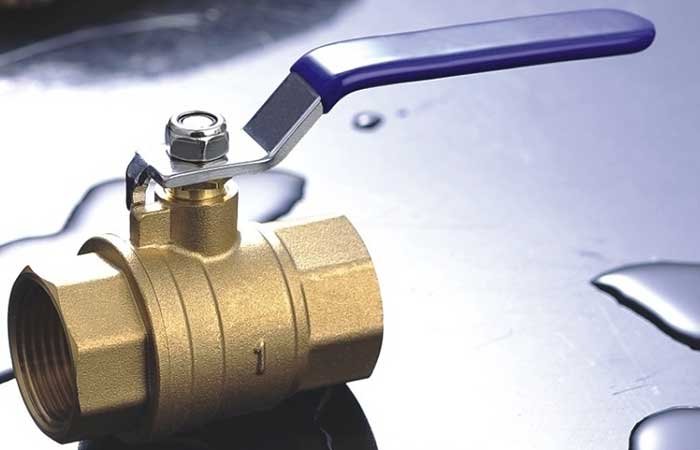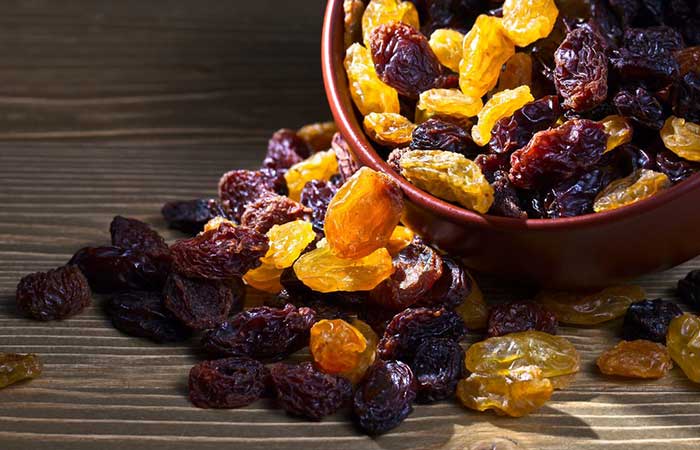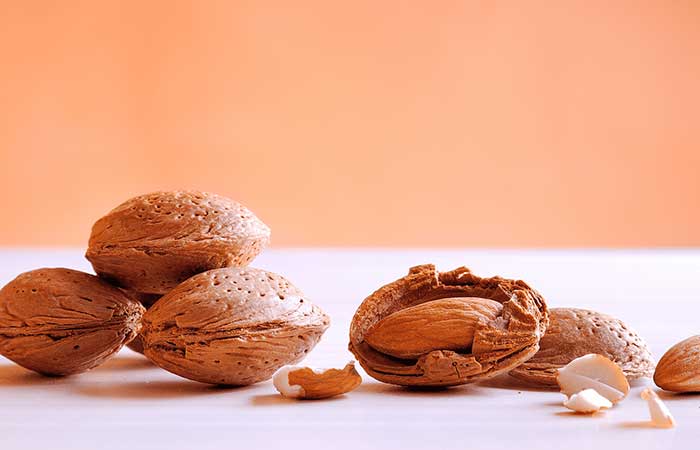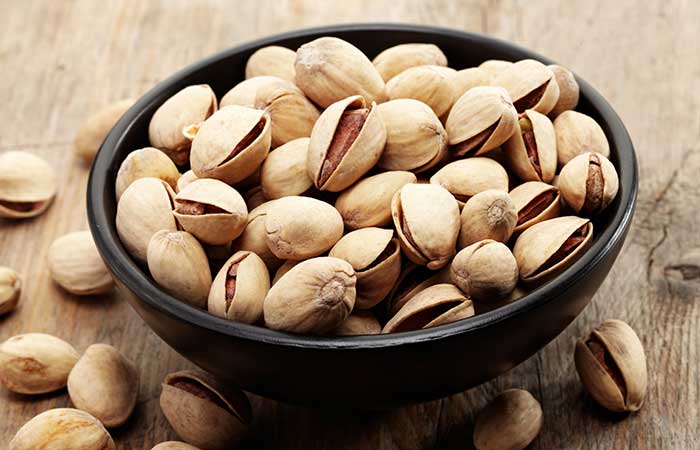Brass Valves; an Introduction and Types

Brass valves are a type of valves made primarily from brass, an alloy composed of copper and zinc. These valves are widely used in various industries and applications, including plumbing, heating systems, industrial processes, and more.
Brass valves offer several advantages due to the properties of brass as a material. Brass is durable, corrosion-resistant, and has excellent heat resistance, making it suitable for use in both high and low-temperature applications. It is also relatively easy to manufacture and work with, which contributes to its widespread use.
There are different types of brass valves, each designed for specific functions and applications. Some common types include:
- Ball Valves: These valves have a spherical closure element (a ball) with a hole in the center. By rotating the ball 90 degrees, the flow is either allowed or blocked completely. Ball valves are known for their reliability and versatility.
- Gate Valves: Gate valves use a sliding gate mechanism to control the flow of fluid. When the gate is lifted, the passage is open, and when it is lowered, the flow is stopped. Gate valves are commonly used for on/off applications and are not recommended for regulating flow.
- Globe Valves: Globe valves have a disc-shaped element and a stationary ring seat. The flow is regulated by raising or lowering the disc onto the seat. Globe valves are suitable for throttling applications and provide good control over flow rates.
- Check Valves: Check valves, also known as non-return valves or one-way valves, allow the flow of fluid in one direction while preventing backflow. They are commonly used to maintain the flow direction and prevent system damage or contamination.
These are just a few examples, and there are other types of brass valves available to suit different needs. It's important to select the appropriate valve type based on factors such as pressure, temperature, fluid compatibility, and the specific application requirements.
Gate Valve
A gate valve is a type of valve that controls the flow of fluid by either fully opening or fully closing the passage within the valve body. It is called a gate valve because it uses a gate-like disc or wedge as the closure element.
The main components of a gate valve include the valve body, the gate or wedge, stem, bonnet, and packing gland. The gate is usually a flat or wedge-shaped disc that moves up and down or sideways to control the flow. When the gate is raised, the passage is fully open, allowing unrestricted flow. When the gate is lowered, it completely blocks the flow, providing a tight shut-off.
Gate valves are primarily designed for on/off applications, where the flow needs to be completely shut off or allowed to flow freely without significant pressure drop. They are not recommended for regulating or throttling purposes due to their limited ability to control flow rates accurately.
Gate valves are commonly used in a variety of industries, including oil and gas, water supply, wastewater treatment, power generation, and more. They are typically employed in applications where low resistance to flow and minimal pressure loss is desired. Gate valves are often used in large sizes and high-pressure systems.
One of the advantages of gate valves is their ability to provide a tight seal when fully closed, minimizing leakage. However, they can be slower to operate compared to other valve types, as the gate needs to move a greater distance to fully open or close the passage.
It's important to note that gate valves come in different designs, including rising stem and non-rising stem configurations. In a rising stem gate valve, the stem moves up and down along with the gate, providing a visual indication of the valve position. In a non-rising stem gate valve, the stem does not rise or lower during operation, which can be beneficial in limited space installations.
Overall, gate valves are widely used for their robustness, reliable shut-off capabilities, and suitability for high-pressure applications that require full opening or closing of the flow passage.
Globe Valve
A globe valve is a type of valve used to regulate or throttle the flow of fluid within a pipeline. It is named for its spherical shape and the spherical shape of the closure element inside the valve.
Globe valves consist of several key components, including a valve body, a movable disc or plug, a stem, a bonnet, and a seating arrangement. The disc or plug, which controls the flow, is usually shaped like a flat or slightly conical surface that can be lowered onto the seat to restrict or stop the flow or raised to allow the flow.
The distinguishing feature of a globe valve is its shape, with the flow direction changing in a 90-degree angle as the fluid passes through the valve. This redirection of flow allows for more precise control over the flow rate. Globe valves are commonly used for applications that require throttling or regulating the flow rather than simply opening or closing it fully.
Globe valves offer several advantages, including excellent flow control, the ability to handle high-pressure and high-temperature applications, and good shut-off capabilities. By adjusting the position of the disc or plug, operators can precisely regulate the flow rate, making globe valves suitable for processes that require fine-tuning and accurate control.
There are two main types of globe valves: the "T-pattern" globe valve and the "Y-pattern" globe valve. The T-pattern globe valve has a perpendicular arrangement of the seat and disc, while the Y-pattern globe valve has an inclined angle between the seat and the flow path. The Y-pattern design is commonly used for high-pressure and high-temperature applications, as it provides better flow characteristics and reduced pressure drop.
Globe valves find application in various industries, including oil and gas, power generation, water treatment, chemical processing, and more. They are particularly suitable for systems that require frequent adjustment of flow rates or where precise control is essential.
It's worth noting that globe valves may have either a rising stem or a non-rising stem design. In a rising stem globe valve, the stem moves up and down as the disc is adjusted, providing a visual indication of the valve position. In a non-rising stem globe valve, the stem remains stationary while the disc moves, making it more suitable for installations with limited vertical space.
Overall, globe valves are popular for their reliable flow control capabilities, versatility, and suitability for regulating flow rates in various industrial applications.
Ball Valve
A ball valve is a type of valve that uses a spherical closure element, known as a ball, to control the flow of fluid through the valve. The ball has a hole or port in the center that allows or blocks the flow, depending on its position.
The main components of a ball valve include the valve body, ball, stem, seats, and seals. The ball is typically made of metal (such as brass or stainless steel) and is mounted on a stem, which is connected to a handle or actuator for manual or automated operation. The seats are located on either side of the ball and provide a tight seal when the valve is closed.
Ball valves are known for their simplicity, reliability, and quick operation. They offer a full bore, meaning the opening in the ball is the same size as the pipeline, allowing for unrestricted flow and minimal pressure drop when the valve is fully open. When the ball is rotated 90 degrees, the hole in the ball aligns with the flow path, allowing fluid to pass through. Rotating the ball by another 90 degrees blocks the flow completely.
The advantages of ball valves include:
- Quick and easy operation: Ball valves can be opened or closed rapidly with a simple quarter-turn of the handle or actuator.
- Excellent sealing: When the ball is in the closed position, the seats provide a tight seal, minimizing leakage.
- Versatility: Ball valves can handle a wide range of fluids, including gases, liquids, and slurries, making them suitable for various industries and applications.
- Durability: Ball valves are typically robust and resistant to corrosion, providing long service life.
- Low maintenance: Due to their simple design and fewer moving parts, ball valves often require minimal maintenance.
Ball valves are commonly used in industries such as oil and gas, water and wastewater treatment, chemical processing, HVAC systems, and more. They are suitable for both high-pressure and low-pressure applications and are often preferred in situations where quick shut-off or flow control is required.
There are different types of ball valves, including floating ball valves and trunnion-mounted ball valves. Floating ball valves have a freely floating ball that is held in place by the compression of the seats, while trunnion-mounted ball valves have additional support from trunnions (or stems) at the top and bottom of the ball. Trunnion-mounted ball valves are typically used for larger sizes and higher pressures.
In summary, ball valves offer efficient flow control, reliable sealing, and versatility, making them widely used in various industries for applications that require on/off control or throttling of fluid flow.
Butterfly Valve
A butterfly valve is a type of valve that uses a rotating disc, known as a butterfly disc or plate, to control the flow of fluid within a pipeline. The disc is mounted on a spindle or stem, which is connected to a handle or actuator for manual or automated operation.
The design of a butterfly valve is characterized by a disc that is positioned in the center of the valve body and perpendicular to the flow direction. When the valve is fully open, the disc is turned parallel to the flow, allowing for unrestricted flow. When the valve is closed, the disc is rotated perpendicular to the flow, blocking the passage and preventing the flow of fluid.
The main components of a butterfly valve include the valve body, disc, stem, seat, and seals. The valve body is typically made of metal, and the disc can be made of metal or a resilient material such as rubber or elastomer. The seat is located around the perimeter of the valve body and provides a sealing surface against which the disc presses to achieve a tight shut-off.
Butterfly valves offer several advantages, including:
- Quick and easy operation: Butterfly valves can be opened or closed rapidly with a quarter-turn of the handle or actuator.
- Cost-effective: Butterfly valves are often more affordable compared to other types of valves, making them a popular choice for many applications.
- Space-saving design: The compact design of butterfly valves requires less space for installation compared to other valves, making them suitable for systems with limited space.
- Good flow control characteristics: Although butterfly valves are primarily designed for on/off service, they can also provide some degree of flow control by adjusting the position of the disc.
- Low pressure drop: When fully open, butterfly valves offer a low-pressure drop, minimizing energy loss and optimizing system performance.
Butterfly valves are commonly used in a wide range of industries and applications, including water treatment, HVAC systems, chemical processing, power generation, and more. They are suitable for both high-pressure and low-pressure applications, depending on the specific design and materials used.
It's important to note that there are different types of butterfly valves, including concentric, double offset, and triple offset designs. Each type has variations in the geometry and arrangement of the disc and seat, offering different performance characteristics and suitability for specific applications.
In summary, butterfly valves are popular for their simplicity, cost-effectiveness, and efficient flow control capabilities. They are widely used in various industries where reliable shut-off and moderate flow control are required.
Pluge Valve
A plug valve is a type of valve that uses a cylindrical or tapered plug as the closure element to control the flow of fluid through the valve. The plug has a through-hole or port that can be aligned with the flow path to allow fluid passage or rotated to block the flow completely.
The main components of a plug valve include the valve body, plug or disc, stem, and seals. The plug is typically cylindrical or cone-shaped, with a passage through its center. By rotating the plug, the passage can be aligned with the flow direction for flow or turned perpendicular to the flow for shut-off.
Plug valves offer a few key advantages:
- Quick and easy operation: Plug valves can be operated with a quarter-turn of the handle or actuator, allowing for rapid opening or closing.
- Reliable sealing: When the plug is in the closed position, it provides a tight seal against the valve body, minimizing leakage.
- Versatility: Plug valves can handle a wide range of fluids, including gases, liquids, and slurries. They are suitable for various applications and industries.
- Durability: Plug valves are generally robust and able to withstand high-pressure and high-temperature conditions.
- Low maintenance: With their simple design and fewer moving parts, plug valves often require minimal maintenance.
Plug valves are commonly used in applications where the flow needs to be completely shut off or allowed to flow freely without significant pressure drop. They are suitable for both on/off service and some throttling applications.
There are different types of plug valves, including lubricated plug valves, non-lubricated plug valves, and eccentric plug valves. Lubricated plug valves have a lubricant injected between the plug and the body to reduce friction and ensure smooth operation. Non-lubricated plug valves are designed to operate without the need for external lubrication, often using self-lubricating materials. Eccentric plug valves have an offset plug that provides a camming action, improving sealing and reducing wear.
Plug valves find application in industries such as oil and gas, petrochemicals, wastewater treatment, and more. They are commonly used in pipelines, refineries, chemical plants, and other process systems.
It's important to consider factors such as pressure, temperature, flow characteristics, and the specific requirements of the application when selecting a plug valve, as different designs and materials are available to suit different needs.
In summary, plug valves are known for their reliable shut-off capabilities, ease of operation, and versatility in handling various fluids. They are widely used in applications where quick shut-off or full opening of the flow passage is required.
Needle Valve
A needle valve is a type of valve that provides precise control over the flow rate of fluid. It is named for its slender, needle-shaped disc or stem that is used to regulate the flow through a small orifice.
The design of a needle valve includes a threaded stem with a pointed or tapered end that fits into a matching seat or orifice within the valve body. By rotating the stem, the needle-like disc can be moved closer to or farther away from the seat, allowing for precise adjustment of the flow rate.
The key features and benefits of needle valves are as follows:
- Flow control: Needle valves are specifically designed to provide accurate and fine control over the flow rate. The tapered shape of the needle disc allows for gradual and precise adjustment, making them suitable for applications that require precise regulation.
- High resistance to leakage: When properly closed, needle valves offer excellent sealing, minimizing the chances of fluid leakage.
- Compact size: Needle valves are typically compact in size and can be used in systems with limited space or in applications that require a high flow rate in a small pipe.
- Variety of materials: Needle valves are available in a range of materials, including brass, stainless steel, and other alloys, allowing for compatibility with different types of fluids and operating conditions.
- Versatile applications: Needle valves find application in a wide range of industries, including laboratory equipment, gas and liquid chromatography, process control systems, hydraulics, and instrumentation.
It's important to note that needle valves are primarily designed for flow regulation and control, rather than for fully shutting off the flow like a ball or gate valve. While they can achieve a high level of flow restriction, they may not provide absolute shut-off.
In summary, needle valves are precision valves that offer accurate control over flow rates in various applications. Their design allows for fine adjustments and flow regulation in systems where precise control is essential.
Pinch Valve
A pinch valve is a type of valve that controls the flow of fluid by pinching or compressing a flexible tube or sleeve. It is called a pinch valve because it uses a pinching mechanism to close off or open the passage of fluid through the tube.
The main components of a pinch valve include the valve body, the flexible tube or sleeve, and the actuation mechanism. The flexible tube is usually made of elastomeric material, such as rubber or synthetic compounds, and is positioned within the valve body. When the valve is in the closed position, the sleeve is compressed or pinched together to block the flow. When the valve is open, the sleeve is released, allowing fluid to flow through the tube.
Pinch valves offer several advantages:
- Simple and cost-effective design: Pinch valves have a straightforward design with fewer components, making them relatively inexpensive compared to other valve types.
- Bi-directional flow capability: Pinch valves can handle fluid flow in either direction, making them versatile in applications where reverse flow may occur.
- Excellent sealing properties: When the sleeve is compressed, it provides a tight seal, minimizing leakage even with abrasive or corrosive fluids.
- Self-cleaning: The opening and closing action of the pinch valve can help dislodge any particles or buildup on the sleeve, contributing to self-cleaning properties.
- Wide compatibility: Pinch valves can handle a wide range of fluids, including slurries, solids in suspension, and abrasive media, making them suitable for diverse applications.
Pinch valves are commonly used in industries such as mining, wastewater treatment, pharmaceuticals, food and beverage, and many others. They are particularly advantageous in applications where the fluid may contain solids, high viscosity, or corrosive materials.
It's worth noting that there are different types of pinch valves, including air-operated pinch valves and manual pinch valves. Air-operated pinch valves use compressed air or fluid pressure to actuate the pinching mechanism, providing remote control and automation. Manual pinch valves, on the other hand, require manual adjustment or operation.
In summary, pinch valves offer reliable and cost-effective flow control solutions, particularly in applications with abrasive or corrosive fluids. Their ability to handle a wide range of media and self-cleaning properties make them suitable for various industries and challenging environments.
Check Valve
A check valve, also known as a non-return valve or one-way valve, is a type of valve that allows fluid to flow in one direction while preventing backflow in the opposite direction. It ensures that the flow of fluid is unidirectional, providing protection against reversal of flow or backflow.
The design of a check valve typically consists of a movable disc, called the check or clapper, which is connected to a hinge or pivot. The check rests against a seat when the fluid flows in the desired direction, allowing the valve to remain open and permitting the fluid to pass through. However, when the flow tries to reverse, the check is forced against the seat, creating a seal and preventing backflow.
Check valves offer several advantages:
- Prevents backflow: The primary function of a check valve is to prevent the reverse flow of fluid, ensuring that it flows in only one direction.
- Automatic operation: Check valves operate automatically, requiring no external power or control to function. They respond to changes in flow direction and pressure differentials.
- Minimal pressure drop: Check valves typically have a low pressure drop, allowing for efficient flow through the valve when it is open.
- Wide range of applications: Check valves find application in various industries, including water and wastewater systems, oil and gas, chemical processing, HVAC systems, and more.
- Diverse designs available: Check valves come in different designs, including swing check valves, lift check valves, ball check valves, and diaphragm check valves. Each design offers specific advantages and is suitable for different applications.
Check valves are commonly used in scenarios where backflow prevention is critical, such as in pumping systems, pipelines, and systems with varying flow rates. They can also be found in appliances like sump pumps, water heaters, and irrigation systems.
It's important to consider factors such as flow rate, pressure, temperature, and the nature of the fluid when selecting a check valve, as different designs and materials are available to suit specific requirements.
In summary, check valves play a crucial role in preventing backflow and ensuring unidirectional flow in various industries and applications. They are reliable, automatic, and offer protection against the unwanted reversal of fluid.
Pressure Relief Valve
A pressure relief valve, also known as a safety valve or pressure safety valve (PSV), is a type of valve used to protect equipment or systems from overpressure conditions. Its primary function is to relieve or release excess pressure by opening and allowing the fluid or gas to escape when the pressure exceeds a predetermined set point.
The design of a pressure relief valve typically includes a spring-loaded mechanism that applies force to a disk or piston, holding it against a seat. The force exerted by the spring is calibrated to a specific pressure level. When the pressure in the system exceeds this set pressure, it overcomes the force of the spring, lifting the disk or piston off the seat, and allowing the fluid or gas to escape. As the pressure decreases and reaches the set pressure level again, the valve closes to prevent further discharge.
Pressure relief valves offer several important features and benefits:
- Overpressure protection: The main purpose of a pressure relief valve is to protect equipment, pipelines, or systems from overpressure situations that can cause damage, rupture, or failure.
- Pressure regulation: Pressure relief valves help regulate and control the pressure within a system, preventing it from exceeding safe limits.
- Automatic operation: Pressure relief valves operate automatically, responding to changes in pressure without requiring human intervention or external control.
- Versatility: Pressure relief valves are used in a wide range of industries, including oil and gas, chemical processing, power generation, water and wastewater, and more.
- Safety compliance: Pressure relief valves are often required by safety codes and regulations to ensure the protection of equipment and personnel.
Pressure relief valves are available in various types, including spring-loaded valves, pilot-operated valves, and balanced bellows valves. Each type has specific advantages and is suitable for different applications and pressure ranges.
When selecting a pressure relief valve, it is crucial to consider factors such as the operating pressure range, flow capacity, the nature of the fluid or gas, and the required set pressure. Proper sizing and installation are essential to ensure effective and reliable pressure relief.
In summary, pressure relief valves are critical components in protecting equipment and systems from overpressure situations. They automatically relieve excess pressure, preventing damage and ensuring the safety and integrity of the process or system.
Conclusion
In conclusion, valves play a crucial role in controlling and regulating the flow of fluids within a wide range of industries and applications. Various types of valves, such as gate valves, globe valves, ball valves, butterfly valves, plug valves, needle valves, pinch valves, check valves, and pressure relief valves, offer specific functions and advantages to meet different flow control requirements.
Gate valves provide a tight shut-off and low flow restriction, making them suitable for on/off service. Globe valves offer precise throttling capabilities and are commonly used for flow control. Ball valves provide quick quarter-turn operation and excellent sealing properties. Butterfly valves are versatile, cost-effective, and offer efficient flow control. Plug valves offer reliable shut-off and are suitable for high-pressure applications. Needle valves provide precise flow control for low-flow applications. Pinch valves are ideal for handling abrasive or corrosive fluids and offer excellent shut-off capabilities. Check valves prevent backflow and ensure unidirectional flow. Pressure relief valves protect equipment from overpressure situations and regulate pressure within systems.
Each valve type has its unique features, benefits, and areas of application, allowing industries to choose the most suitable valve for their specific needs. It is important to consider factors such as pressure, temperature, flow characteristics, fluid compatibility, and system requirements when selecting a valve.
Valves are essential components in industries such as oil and gas, chemical processing, water and wastewater treatment, power generation, HVAC systems, and many others. They contribute to efficient and safe operations, protecting equipment, ensuring process integrity, and enabling precise flow control.
Overall, valves are fundamental tools that enable the efficient and reliable control of fluid flow, playing a vital role in various industrial processes and systems. Their diverse range of types and functionalities provide solutions for a wide array of flow control requirements, making them indispensable in numerous industries.
Similar Articles
Bell peppers belong to the nightshade family (Solanaceae) and are cultivated primarily for their mild, thick-fleshed fruits. These peppers are commonly used both in salads and various cooked dishes
Raisins have a long and storied history, dating back thousands of years to ancient civilizations like Persia and Egypt. They were not only consumed as a food source but also held cultural and religious
Almonds are indeed a popular and versatile tree nut used in various culinary applications around the world. Here are some key points about almonds:Botanical Description: The almond tree, scientifically
Pistachios are indeed members of the cashew family (Anacardiaceae) and are primarily grown in dry, warm or temperate climates. The pistachio tree is believed to have originated in Iran and has been





